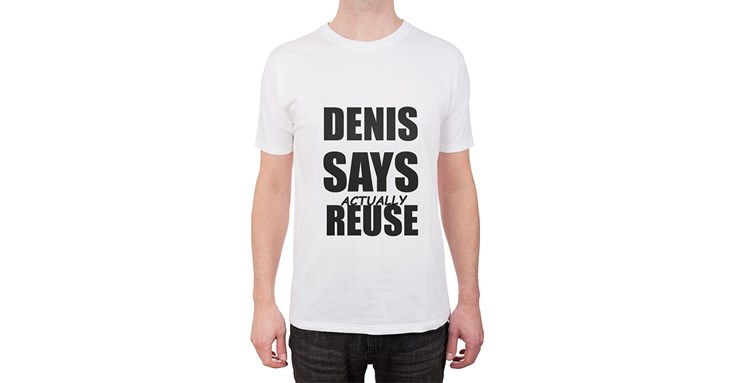Overcoming the 'Cupboard of Shame': Reuse, Don't Over-accumulate!
Published: 23 May 2023

In his regular feature, Denis the Dustcart talks about the hidden environmental cost of hoarding reusable cups and bottles. Aim for effective reuse, reduce consumerism, and optimise recycling.
You can follow Denis on his Facebook page to keep up with information about Recycling issues.
If you attend an event or a conference and a company tries to prove their commitment to the planet by offering you a goody bag with their reusable cup or bottle in it, just say no. That is, of course, unless you don't already have a reusable cup or bottle.
A friend recently mentioned they had thirteen different reusable cups and bottles stowed away in their 'cupboard of shame'.
Consider this: how many times would these items need to be reused collectively before their ecological and environmental footprint became equivalent to that of thirteen single-use cups and bottles? The number would likely be in the thousands.
Single-use packaging is a significant issue, but it's also problematic to use items designed for multiple uses only once or twice before relegating them to the back of a cupboard. Striking a balance is key.
If you frequently buy takeaway hot drinks or prefer bringing them from home, then a reusable cup is undoubtedly a sensible choice.
However, if you're out and about and realise you've forgotten your reusable cup, and you can't resist the allure of a café coffee, opting for a single-use cup – one that can be recycled at a café cup recycling point – might be the better option if you don't have time to drink it inside.
Avoiding takeaway cold drinks can be as simple as preparing your lunch at home, helping you dodge those refrigerated meal deals at lunchtime, which could save you a significant amount of money.
Refrigerators in stores that hold single-serving fresh food are problematic. They not only consume vast amounts of energy, but they also promote the convenience mentality that fuels consumerism, leading to climate breakdown in the process.
(I fail to see how it could be more convenient for me to trek to a shop during lunchtime than to spend five minutes and less money preparing lunch at home. But that's beside the point.)
So, what can we do if we've hoarded too many reusable cups or bottles?
Sure, we can give them away, but that depends on whether the intended recipients already have a reusable cup or bottle and whether charity shops will accept them without eventually having to pay for their disposal alongside other unsellable 'donations'.
This raises a question: can any of these reusables be recycled?
Steel bottles should be placed in the scrap metal bin at the recycling centre. They can't be processed alongside regular, thinner steel cans by domestic recycling facilities, much like saucepans and other sturdy metal items.
Aluminium is highly valuable and can be recycled indefinitely. Although mining raw bauxite for aluminium is among the most ecologically damaging processes mankind has developed, not all aluminium can be processed together.
It's not feasible to bunch a load of aluminium foil inside a can and recycle it all at once because the foil and the can melt at different temperatures. The foil would simply burn up before it could be repurposed.
Aluminium water bottles are thicker than cans, so these items would need to be processed separately. Domestic recycling facilities are designed for processing cans, meaning heavier items should be taken to a recycling centre.
The recycling of the plastic component of mixed material items like plastic and aluminium isn't straightforward either. It's extremely unlikely that any of the plastic would end up being recycled, and it might be the case that the whole product is too complex to process.
Most 'squeezy' water bottles are made from LDPE (low-density polyethylene, or plastic number 4), which, while recyclable, is of low value. It can only be processed alongside mixed pots, tubs, and trays into products of limited quality and usefulness.
More rigid plastic bottles aren't typically recyclable from home, but here in Exeter, we can pass them through our granulator with other problematic plastics to create a 'granulate'. This material can then be sold to our regional partners who turn it into various composite products.
Unfortunately, bamboo cups can't be recycled at all.
However, the key point isn't to recycle reusable cups and bottles. The goal is to reuse them. After all, who could possibly hope to use thirteen of them enough times to render them 'green'?
It's worth bearing in mind that while reuse is preferable to recycling, reducing consumption is still the best approach. This includes limiting the number of reusable bottles and cups we acquire.
We can't afford to leave thousands of potential reuses in the cupboard — reuses that, quite simply, will never come to fruition.

